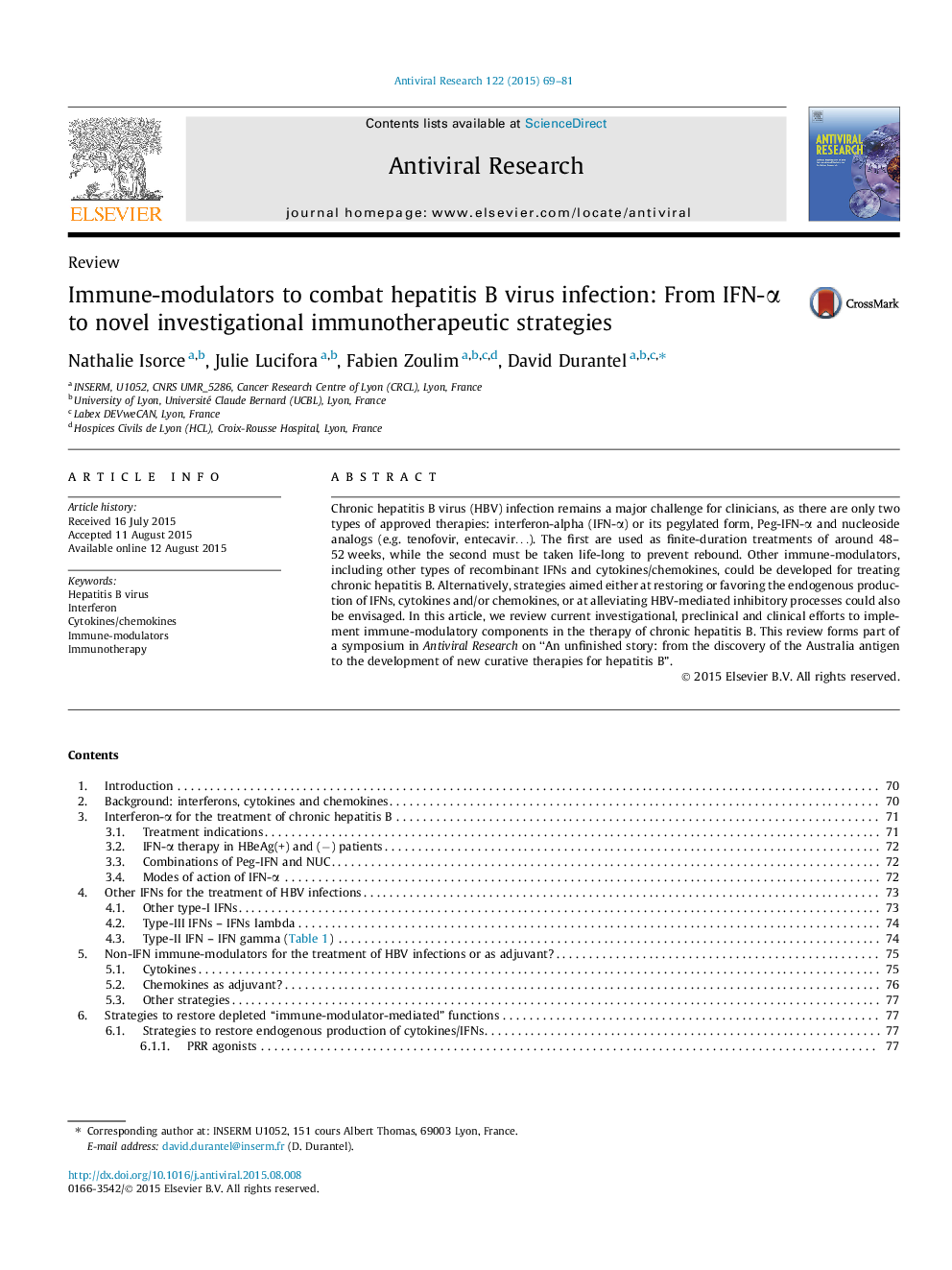| Article ID | Journal | Published Year | Pages | File Type |
|---|---|---|---|---|
| 5821832 | Antiviral Research | 2015 | 13 Pages |
â¢Interferon-α (IFN-α) and its pegylated form are used as “front line” therapy to treat patients with chronic hepatitis B.â¢IFN-α-based therapies result in “HBeAg to anti-HBeAg” seroconversion in about 30% of cases.â¢The same therapies result in “HBsAg to anti-HBsAg” seroconversion in about 3% of cases.â¢New immune-modulator strategies are needed to restore endogenous production of IFN-α and other cytokines/chemokines.â¢Basic research is also needed to better understand the interplay between hepatitis B virus (HBV) and the immune system.
Chronic hepatitis B virus (HBV) infection remains a major challenge for clinicians, as there are only two types of approved therapies: interferon-alpha (IFN-α) or its pegylated form, Peg-IFN-α and nucleoside analogs (e.g. tenofovir, entecavirâ¦). The first are used as finite-duration treatments of around 48-52 weeks, while the second must be taken life-long to prevent rebound. Other immune-modulators, including other types of recombinant IFNs and cytokines/chemokines, could be developed for treating chronic hepatitis B. Alternatively, strategies aimed either at restoring or favoring the endogenous production of IFNs, cytokines and/or chemokines, or at alleviating HBV-mediated inhibitory processes could also be envisaged. In this article, we review current investigational, preclinical and clinical efforts to implement immune-modulatory components in the therapy of chronic hepatitis B. This review forms part of a symposium in Antiviral Research on “An unfinished story: from the discovery of the Australia antigen to the development of new curative therapies for hepatitis B”.
